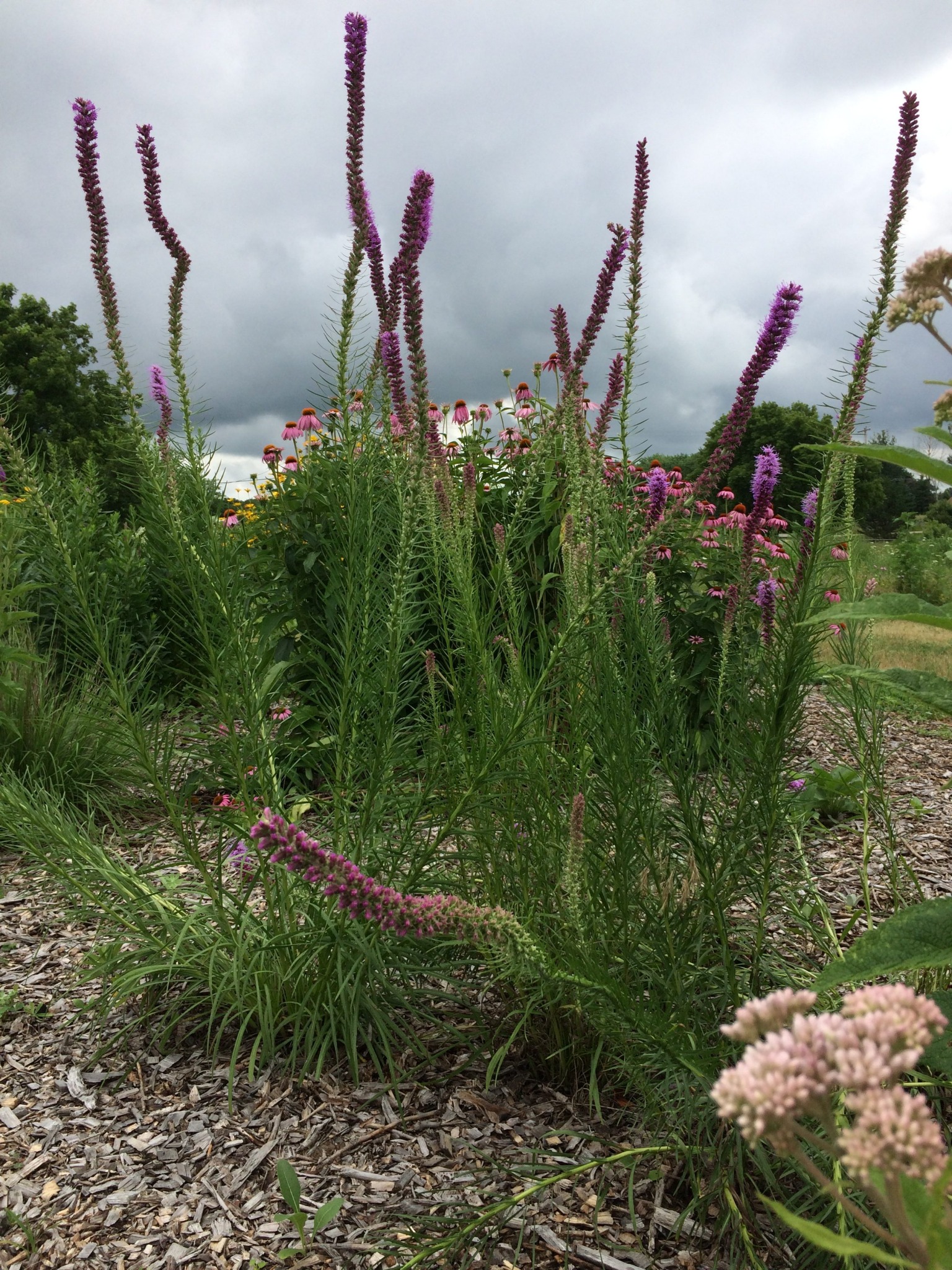Description
OUT OF STOCK
Tall, erect, purplish- pink spike in August-September
Tall, erect, purplish- pink spike in August-September
OUT OF STOCK
Tall, erect, purplish- pink spike in August-September
Magenta-purple up-facing cups with white centers, June – October
Size: 6" x 12-24"
Care: Full sun in well-drained soil.
Native: Missouri to Texas
Wildlife Value: host for larva of Gray Hairstreak butterfly and nectar source for many different butterflies.
Awards: Missouri Botanic Garden Plant of Merit; 1999 Plant Select®; Great Plants for Great Plains Plant of the Year 2020
Callirhoe is named for the goddess Callirhoe, daughter of Hermocrates, the Greek river god. Teton Dakota fired the dried root for smoke to cure the common cold and its aches and pains. The liquid used to boil the root relieved internal pain. First collected and named by English plant hunter Thomas Nuttall (1785-1859) but then renamed by other botanists. Ferry’s 1876 catalog described it as having “a trailing habit, of great beauty.” William Robinson (1838-1935), father of today’s mixed perennial border, recognized it to be “excellent for the rock garden, bearing a continuous crop of showy blossoms from early summer till late in autumn.”
Purplish-blue spikes from July to October, very fragrant.
Size: 2-3' x 12"
Care: Full sun in well-drained soil, heat and drought tolerant.
Native: North America
Wildlife Value: Skipper butterflies and Rusty patched Bumble Bees love Anise hyssop’s nectar, Deer resistant.
The name Agastache is from Greek agan and stachys meaning much like an ear of wheat referring to the shape of the flower spike. Anise hyssop leaves were used by American Americans of the Missouri River region to make tea and as a sweetener in cooking. For Cheyenne it relieved chest pain due to coughing or to a dispirited heart. Listed as an aromatic herb in Bernard McMahon’s 1805 book, American Gardener’s Calendar.
Brilliant orange with purple spots, turks-cap lily with dramatic, swept-back petals blooming late summer to early fall. Slow to mature but when it does it bears up to 40 flowers on one plant.
Size: 10’ x 12”
Care: Sun in moist to moist-well-drained, acidic soil
Native: from VT to Fl & west to Mississippi River, Wisconsin native
Lilium was named for the Greek word for smooth, polished referring to its leaves. This collected before 1665. In his 1665 book, Flora, seu de Florum Cultura John Rea, nurseryman and author, called it the “Virginia Martagon.” Sold in America’s 1st plant catalog, Bartram’s Broadside, 1783. L.H. Bailey (1913): “The most magnificent and showy of native North American species, well worthy of extensive cultivation.”
OUT OF STOCK
Lemon yellow silky petals bloom late spring to early fall on this tough-as-nails native
Size: 9-18” x 12-15”
Care: sun in well-drained soil, drought tolerant
Native: Great Plains: Central Canada to TX, Michigan to Montana, WI native
1st described in 1818 by Thomas Nuttall, English planthunter who collected hundreds of “new” plants in North America. Caly is Greek for calyx; lophos for “the back of the neck; crest of a hill or helmet” serrulatus means “minutely serrate” or “saw-toothed” describing the leaf margins.

